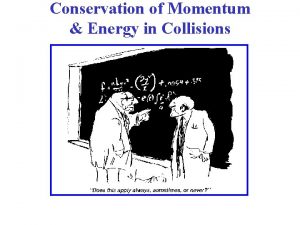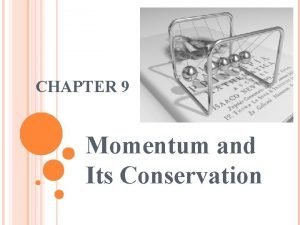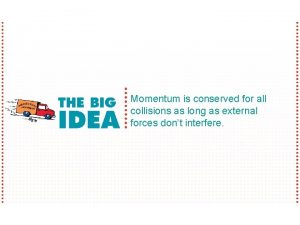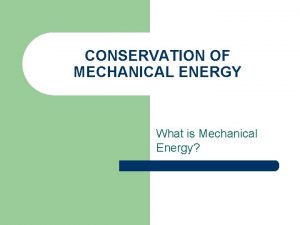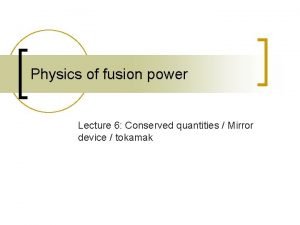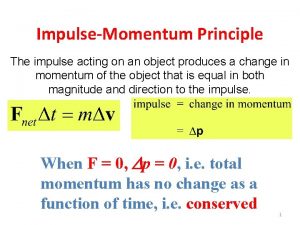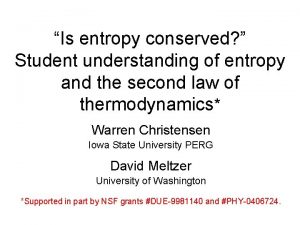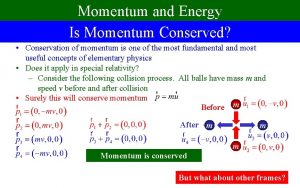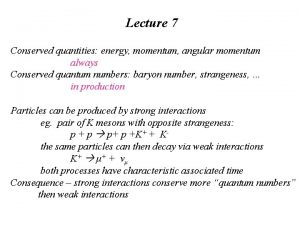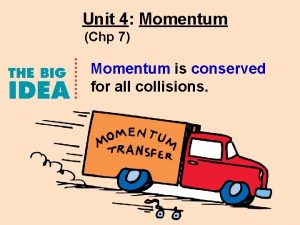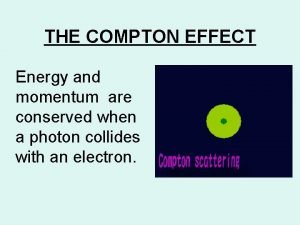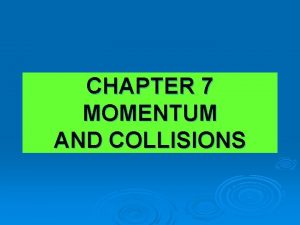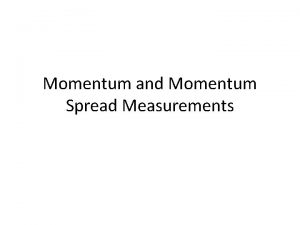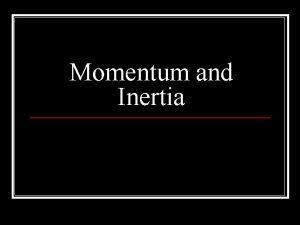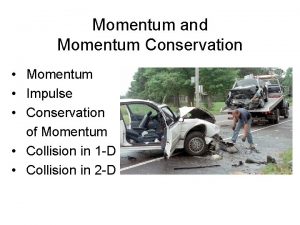Aim How is momentum and energy conserved together
















- Slides: 16

Aim: How is momentum and energy conserved together? Do Now: Quiz HW: Problem Set

Writing: Momentum of a Bullet • Why are bullets able to pass through objects much larger then themselves?

A Riddle… What do you get when you combine 2 bikes, two foam sticks and 2 idiots?

A Collision! Conservation of Momentum

Conservation of Momentum • In a system, the momentum of the individual components may change, but the total momentum of the system remains constant. • Law of Conservation of Momentum: pbefore = pafter • How is this useful?

Elastic Collisions Describe how pool balls behave when they collide. Animation Two objects collide and SEPARATE without any sticking When the two objects have the same MASS, they TRADE MOMENTUM

Example #1 • A 2 kilogram ball moving at +3 meters per second collides with a 3 kilogram ball at rest. – Assuming that the 2 kilogram ball stops after the collision, calculate the velocity of the 3 kilogram ball after the collision.

Completely Inelastic Collision What would be the opposite of an elastic collision? Animation Two objects collide and STICK together The MASSES of the objects COMBINE TO FORM A SINGLE MASS

Example #2 • A 5 kilogram cart moving right at 6 meters per second collides with a 10 kilogram cart moving left at 6 meters per second. – If the two carts stick together during the collision, determine their final velocity.

Collision Types Elastic Collision: Total Kinetic energy is conserved. • Pinitial = Pfinal… m 1 v 1 + m 2 v 2 = m’ 1 v’ 1 + m’ 2 v’ 2 Elastic: • KE conserved! (1/2)m. Av 2 A + (1/2)m. Bv 2 B = (1/2)m. Av’ 2 A + (1/2)m. Bv’ 2 B

Collision Types Inelastic Collision: Kinetic energy NOT conserved. • Pinitial = Pfinal… m 1 v 1 + m 2 v 2 = (m 1 + m 2) v’ Inelastic: Inelastic collision: Kinetic energy is not conserved and energy is lost thermally or by other means ALWAYS!

4 Types of Collisions • Elastic: Objects separate and KE conserved • Inelastic: Objects separate, but KE not conserved due to friction. • Completely Inelastic: Objects stick together upon colliding and KE is not conserved. • Explosion/Recoil: Objects are pushed apart and KE is not conserved.

Explosion/Recoil 1. What happens to the man and the bullet in this case? 2. How is momentum conserved? 3. What was his momentum before the recoil?

Explosion/Recoil Two objects held together are PUSHED APART Animation BEGIN WITH A MOMENTUM OF ZERO How does direction matter in this example?

Example #1 • A 100 kilogram cannon has a 5 kilogram cannonball inside it. – When the cannonball is fired, what happens to the cannon? The cannon will move backward – If the cannonball has an initial velocity of 20 meters per second, calculate the velocity of the cannon.

SUMMARY • How do we calculate impulse from a graph? • Define the Law of Conservation of Momentum. • Why does the direction of an object’s motion matter? • Name and describe the two situations where momentum is conserved.
 Momentum is conserved
Momentum is conserved Perfectly inelastic collisions
Perfectly inelastic collisions Conservation of momentum
Conservation of momentum Momentum formula
Momentum formula Momentum is conserved in all collisions
Momentum is conserved in all collisions Conservation of linear momentum
Conservation of linear momentum The law of conservation states
The law of conservation states What is the conservation of mechanical energy
What is the conservation of mechanical energy When is mechanical energy conserved
When is mechanical energy conserved Gravity and kinetic energy
Gravity and kinetic energy Outward power coils
Outward power coils Is impulse conserved
Is impulse conserved Is entropy conserved
Is entropy conserved Conceptual physics chapter 6 momentum
Conceptual physics chapter 6 momentum Energy energy transfer and general energy analysis
Energy energy transfer and general energy analysis Energy energy transfer and general energy analysis
Energy energy transfer and general energy analysis Opvoedbelasting
Opvoedbelasting

